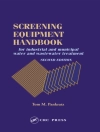- Covers the theoretical framework underpinning biodiversity conservation in agriculture, as well as key developments in areas such as mapping and modelling diversity
- Comprehensive review of the range of biodiversity conservation practices such as field margins, hedgerows, agroforestry and improved grassland management
- Includes case studies of successful biodiversity conservation programmes
Tabla de materias
Part 1 Methods to study biodiversity in agroecosystems
1.The challenge of monitoring biodiversity in agricultural landscapes at the EU level: M. L. Paracchini, European Commission, Joint Research Centre (JRC), Italy; S. Condé, European Topic Centre on Biological Diversity – Muséum National d’Histoire Naturelle, France; R. D’Andrimont, European Commission, Joint Research Centre (JRC), Italy; B. Eiselt, European Commission, Eurostat, Luxembourg, Luxembourg; O. Fernandez Ugalde, E. Gervasini and A. Jones, European Commission, Joint Research Centre (JRC), Italy; V. Kovacevic, European Commission, DG Environment, Belgium; R. Oppermann, Institut für Agrarökologie und Biodiversität (IFAB), Germany; A. Orgiazzi, M. Van der Velde, C. Polce and C. Rega, European Commission, Joint Research Centre (JRC), Italy; C. Van Swaay, De Vlinderstichting, The Netherlands; and P. Voříšek, Czech Society for Ornithology, Czech Republic;
2.Modelling biodiversity in agriculture: G. R. Squire, James Hutton Institute, UK;
3.Assessing the economic value of agricultural biodiversity: a critical perspective: Corrado Topi, Stockholm Environment Institute at York, Department of Environment and Geography and Interdisciplinary Global Development Centre, University of York, UK; and Leonie J. Pearson, Stockholm Environment Institute, Thailand;
4.Functional biodiversity for the provision of agroecosystem services: Paolo Bàrberi and Anna-Camilla Moonen, Institute of Life Sciences – Scuola Superiore Sant’Anna, Italy;
Part 2 Management practices to support agroecosystem services
5.The role of field margins in biodiversity conservation in agroecosystems: Alicia Cirujeda and Gabriel Pardo, Centro de Investigación y Tecnología Agroalimentaria de Aragón (CITA-Universidad de Zaragoza), Spain;
6.The role of hedgerows in supporting biodiversity and other ecosystem services in intensively managed agricultural landscapes: Audrey Alignier, Léa Uroy and Stéphanie Aviron, INRAE, France;
7.Reconciling production and biodiversity in management of pastures and grasslands: Sylvain Plantureux, Université de Lorraine, INRAE, LAE, France;
8.The importance of agroforestry systems in supporting biodiversity conservation and agricultural production: a European perspective: M. R. Mosquera-Losada, J. J. Santiago-Freijanes, A. Rigueiro-Rodríguez, F. J. Rodríguez-Rigueiro, D. Arias Martínez, A. Pantera and N. Ferreiro-Domínguez, University of Santiago de Compostela, Spain;
Sobre el autor
Professor Anastasia Pantera is Vice-President of the Department of Forestry and Natural Environment Management at the Agricultural University of Athens, Greece. Professor Pantera is an Associate Editor of Agroforestry Systems.












